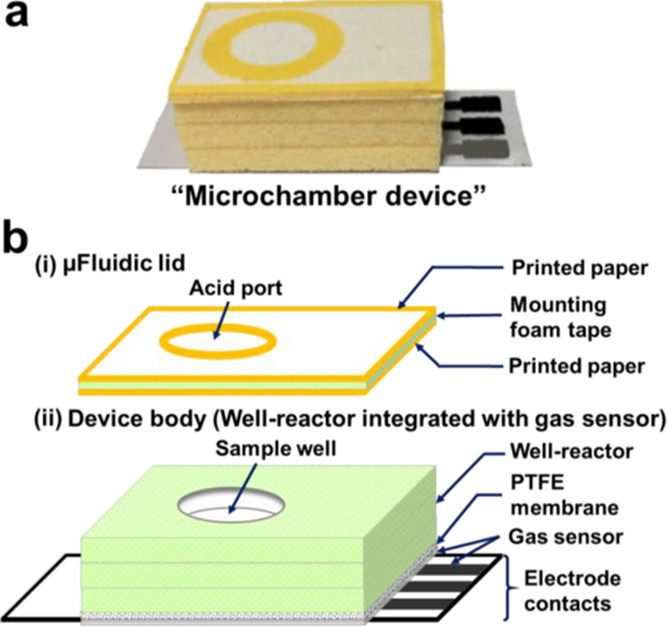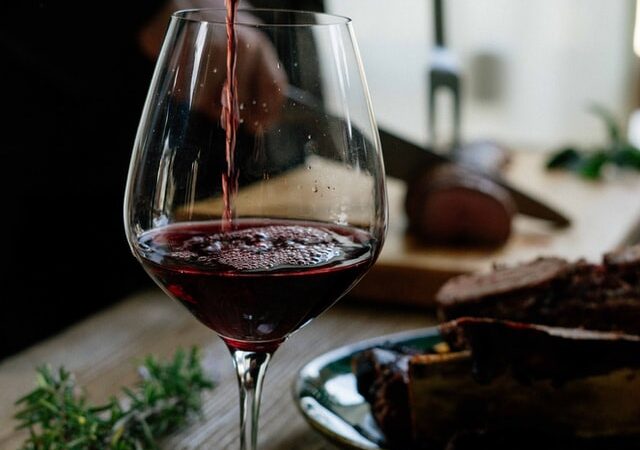Title: Disposable Microchamber with a Microfluidic Paper-Based Lid for Generation and Membrane Separation of SO2 Gas Employing an In Situ Electrochemical Gas Sensor for Quantifying Sulfite in Wine
Authors: Paithoon Prasertying, Thita Ninlapath, Nanthatchaphon Jantawong, Thinnapong Wongpakdee, Thitaporn Sonsa-ard, Kanchana Uraisin, Phoonthawee Saetear, Prapin Wilairat, and Duangjai Nacapricha
Journal: Analytical Chemistry
Year: 2022
DOI: https://doi.org/10.1021/acs.analchem.2c00496
Featured image by Lefteris kallergis
Effective food quality and safety practices and policies are critical for sustainable living and healthy lifestyles. The World Health Organization indicates that nutrition, food safety, and food security are very closely linked where inadequate practices of these areas will result in severe consequences including malnutrition and diseases. Unsafe food greatly impacts vulnerable groups, including elderly, infants, youth and sick individuals. Food safety is a top priority for human health, where effective food practices and technologies are critical to ensure security, quality and response to public health threats associated with food handling and distribution.
In each country there are various organizations and agencies that maintain and regulate food. In Canada, for example, the Canadian Food Inspection Agency enforces the food safety and nutritional quality standards established by Health Canada. The regulations evaluate various factors for food quality which can include; control on food additives, chemical residue levels, and maximum limits for pesticides and chemicals contaminants.
One specific chemical that is evaluated is sulfite. Sulfite is a chemical that is used as a preservative and antioxidant to prevent the browning of food during processing and storage. While sulfite provides advantages for food maintenance, it can also negatively impact human health. The implication for human health results in regulations for sulfite content in food and drink products, such as wine. The sulfite content in wine is set according to various regulation agencies based on specific countries. In the European Union, the sulfur dioxide content of wines cannot exceed 150 and 200 mg L-1. In United States, Canada, and Japan the limit is 300 mg L-1.
To evaluate the limits, various measurement and detection kits are required. Current methods such as the standard AOAC method, or ex situ detection, are limited due to loss of SO2 gas during experiment. Other methods, such as spectrometric enzyme-based test kits and automated flow-based methods, are limited due to high cost, and commercial and methodological constraints (e.g. large sample size, refrigeration, heating, etc).
Potential detection devices for sulfite quantification includes the development of electrochemical devices. These technologies have strong potential as effective detectors because they are portable (e.g. pocket size potentiostats) and at commercially affordable prices (2000-3000 USD). In addition, these devices can be connected through smartphones for efficient and convention on-site data acquisition / operations.
Prasertying and colleagues have developed a voltametric measurement device (figure 1) for sulfite quantification using a fully disposable microchamber for the monitoring of winery processes and bottled wine. The device consists of a microchamber which has a graphene-based gas sensor. They have incorporated a Teflon membrane over the graphene electrode which allows for gas to diffuse to the sensor. The microchamber also has a specially made paper based microfluidic lid (µFluidic lid). The acid reagent is placed on top of the µFluidic lid, where it drips into sample solution in reproducible manner. This generates SO2 gas which diffuses through the membrane and is measured using the electrochemical gas sensor.

Figure 1. Schematic diagram of Microchamber device for sulfite detection. Figure is adapted from Prasertying et al., 2022. Link: https://doi.org/10.1021/acs.analchem.2c00496. Notice to readers: further permission related to the study material excerpted should be directed to the ACS.
Prasertying and colleagues have applied their developed microchamber to analysis of various wines, specifically five white wines and three red wines. The authors have compared the results of the microchamber device to that given by gas-diffusion flow injection system with C4D detection (FIA-C4D). The comparative results (paired t-test) in figure 2 demonstrates that there is good agreement with microchamber and FIA-C4D.

Figure 2. Sulfite content of five different white wines and 3 different red wines using microchamber device. Figure adapted from Prasertying et al., 2022. Link: https://doi.org/10.1021/acs.analchem.2c00496. Notice to readers: further permission related to the study material excerpted should be directed to the ACS.
Prasertying and colleagues present development of a novel microchamber device for sulfite quantification in drinks (i.e. wine). The microchamber consists of a unique microfluidic lid with reproducible acid reagent addition, and a gas-diffusion membrane attached to graphene-based sensor. To the best of the authors knowledge, this is the first graphene-based electrochemical sensor for detection of SO2 in solution. Overall, the development of the microchamber provides a portable and commercial method for sulfite quantification in wine samples.

